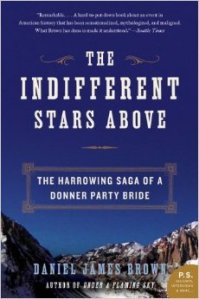Christmas, 1992. We ate a spiced beef roast that I had cured with juniper, allspice and salt for two weeks and a Country Christmas Cake, a heavy, dark fruitcake swathed in marzipan that had been aging since October. I’m sure they were wonderful, but I can’t quite remember how they tasted. What I do remember is knowing that I had to make them, next Christmas, as soon as I read “How to Face the Holidays” by Laurie Colwin in the December 1991 issue of Gourmet magazine. It began:
When Thanksgiving has passed and the leaves are off the trees, the harried modern person looks to the winter holidays like someone slumped across a railroad track contemplating an oncoming train.
She has found two splendid things to eat that can be made long in advance. “There is nothing else like them. They must be made by hand. And they cannot be bought.”
The cake will amaze your friends:
Most impressive is the fact that you have made this gorgeous, amazing, traditional cake yourself from an ancient recipe. Hands down, it is the best cake I have ever made—and also the best I have ever eaten.”
The spiced beef, from a recipe by Elizabeth David “…is perfectly expressed, perfectly correct, and perfectly delicious. The fact that I produced this rather magnificent thing shocked even me.”
 Laurie Colwin was a well known novelist by the early 1990s, when she began writing a series of columns for Gourmet. Their irresistible combination of food writing, memoir, and life advice made her immediately beloved by Gourmet’s readers, including me. She was funny, opinionated, personal, and, most of all, forgiving. She wrote about simple, delicious food that could be flung together easily by a frazzled cook. She also told wonderful stories about bad food: kitchen experiments gone awry (a pudding that tasted like “lemon-flavored bacon fat”) and repulsive dinners (“There is something truly triumphant about a really disgusting meal.”). Several of the recipes — fried chicken, tomato pie, creamed spinach, gingerbread — were instant sensations that are still kept in many cooks’ clipping files.
Laurie Colwin was a well known novelist by the early 1990s, when she began writing a series of columns for Gourmet. Their irresistible combination of food writing, memoir, and life advice made her immediately beloved by Gourmet’s readers, including me. She was funny, opinionated, personal, and, most of all, forgiving. She wrote about simple, delicious food that could be flung together easily by a frazzled cook. She also told wonderful stories about bad food: kitchen experiments gone awry (a pudding that tasted like “lemon-flavored bacon fat”) and repulsive dinners (“There is something truly triumphant about a really disgusting meal.”). Several of the recipes — fried chicken, tomato pie, creamed spinach, gingerbread — were instant sensations that are still kept in many cooks’ clipping files.
The Gourmet columns are collected in Home Cooking: A Writer in the Kitchen and More Home Cooking: A Writer Returns to the Kitchen. The second book was published after Colwin’s untimely death in October 1992.
Long before the term “comfort food” came into fashion, Colwin understood and relied on the consoling power of food and, by extension, food writing:
… for those of you who are suffering from sadness or hangover, or are feeling blue or tired of life, if you’re not going to read Persuasion, you may as well read Italian Food by Elizabeth David.
Or, better yet, read Home Cooking by Laurie Colwin.
Check the WRL catalog for Home Cooking.
Check the catalog for More Home Cooking











 Amber Appleton, at seventeen years old, is a busy girl – visiting the elderly at the local nursing home, swapping haikus with a Vietnam veteran, teaching English through R&B at a Korean Catholic church, and looking out for the socially-struggling guys of the “Franks Freak Force Federation.” She is an optimist, a Catholic, and homeless – sleeping in the school bus her single mother drives all day before barhopping at night for Mr. Right Now. Amber makes up for the lack of stability in her life with the diversion she finds in helping and connecting with others. Readers will question whether her pluck, happiness, and faith are in spite of her situation or because of it. Amber’s voice is funny, snarky, and authentic (her language likely influenced by Quick’s former years teaching high school). In the hands of a less skilled author, this could be a gag-inducing after-school special about unlikely triumph, but Quick gives us a real story about relationships, hardship, joy, and emotional survival.
Amber Appleton, at seventeen years old, is a busy girl – visiting the elderly at the local nursing home, swapping haikus with a Vietnam veteran, teaching English through R&B at a Korean Catholic church, and looking out for the socially-struggling guys of the “Franks Freak Force Federation.” She is an optimist, a Catholic, and homeless – sleeping in the school bus her single mother drives all day before barhopping at night for Mr. Right Now. Amber makes up for the lack of stability in her life with the diversion she finds in helping and connecting with others. Readers will question whether her pluck, happiness, and faith are in spite of her situation or because of it. Amber’s voice is funny, snarky, and authentic (her language likely influenced by Quick’s former years teaching high school). In the hands of a less skilled author, this could be a gag-inducing after-school special about unlikely triumph, but Quick gives us a real story about relationships, hardship, joy, and emotional survival. Anda is a skilled player in a multiplayer online game called Coarsegold Online who learns about gold farmers – paid players in the game who simply hunt and gather treasures in the game for other high-bidding players who pay for, rather than earn, these points and tokens. At first annoyed by these illegal “cheaters,” and shortly after hired to hunt them for money, she learns that these gold farmers are overworked, poorly compensated players in other parts of the world for whom gold farming is not just a game, but their livelihood. Anda deals with conflicts with others in her guild in the game, confronts her own conflicted feelings about the gold farmers, tries to allay her parents’ concern about her online behavior, and struggles with right and wrong from different perspectives. I had been waiting since September 2014’s reviews for this book and was not disappointed by this beautiful graphic novel.
Anda is a skilled player in a multiplayer online game called Coarsegold Online who learns about gold farmers – paid players in the game who simply hunt and gather treasures in the game for other high-bidding players who pay for, rather than earn, these points and tokens. At first annoyed by these illegal “cheaters,” and shortly after hired to hunt them for money, she learns that these gold farmers are overworked, poorly compensated players in other parts of the world for whom gold farming is not just a game, but their livelihood. Anda deals with conflicts with others in her guild in the game, confronts her own conflicted feelings about the gold farmers, tries to allay her parents’ concern about her online behavior, and struggles with right and wrong from different perspectives. I had been waiting since September 2014’s reviews for this book and was not disappointed by this beautiful graphic novel. Matt Miller is a modern day teen in Brooklyn whose mother has passed away from cancer. Partly to start helping his father and partly to distract himself from the fact that everyone seems to pity him, Matt visits the “Cluck Bucket” to try apply for a job, when a emergency cleanup he witnesses convinces him food service is not for him. The local funeral director, Mr. Ray, who coincidentally oversaw his mother’s arrangements, offers him $30 a day to help out around the funeral home when they run into each other this fateful day at the chicken joint. The next day Matt reports after school and helps Mr. Ray set up flowers, receptions, and handle basic arrangements. As Matt’s father descends into drink, Matt becomes both more independent and connected to more people in his community through his work at the home.
Matt Miller is a modern day teen in Brooklyn whose mother has passed away from cancer. Partly to start helping his father and partly to distract himself from the fact that everyone seems to pity him, Matt visits the “Cluck Bucket” to try apply for a job, when a emergency cleanup he witnesses convinces him food service is not for him. The local funeral director, Mr. Ray, who coincidentally oversaw his mother’s arrangements, offers him $30 a day to help out around the funeral home when they run into each other this fateful day at the chicken joint. The next day Matt reports after school and helps Mr. Ray set up flowers, receptions, and handle basic arrangements. As Matt’s father descends into drink, Matt becomes both more independent and connected to more people in his community through his work at the home. This volume of collected webcomics from Jillian Tamaki was a no-brainer purchase for the Young Adult Graphic Novel collection–it is centered on teen protagonists at an X-Men/Hogwarts-type boarding school, and is written and illustrated by the illustrator of the Printz Award-winning This One Summer. Upon receipt, it was cataloged for the Adult Collection, and when I sat down to reconsider its classification, I was hooked, and honestly doubtful as to just where this quirky volume should reside.
This volume of collected webcomics from Jillian Tamaki was a no-brainer purchase for the Young Adult Graphic Novel collection–it is centered on teen protagonists at an X-Men/Hogwarts-type boarding school, and is written and illustrated by the illustrator of the Printz Award-winning This One Summer. Upon receipt, it was cataloged for the Adult Collection, and when I sat down to reconsider its classification, I was hooked, and honestly doubtful as to just where this quirky volume should reside.




